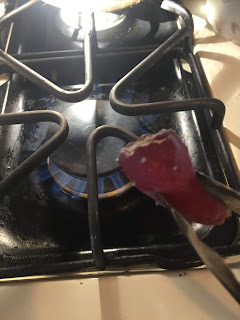John and I were able to attend an End time Preparation Week-end !!
If you would like to hear some of the presentations; they are on Jim Buller's FB Page... Here is the link: https://www.facebook.com/jim.buller.9?__tn__=%2CdlCH-R-R&eid=ARDuUdofKXgXICV1mnfd8IKHLpHp8ic1h1geZay4WrKvOekPegxwXdQJn3zlmQB4u6WJWB3NBPhWXk3L&hc_ref=ARQFCGzVYymce9ZzG73qYYkQVhHHUOn236Nz6MdN_s-WL_94HyR0NY_HQIKguYI4Xng
We are living in the end times and it's time to prepare our Hearts... #1, and to prepare our lifestyles and put our priorities in order!! God's grace is promised to help us through every issue we face in the times ahead...
Hope you can listen to some of these... Jim has the pdf's for the whole series so you can get the texts and paragraphs that he is following. Let me know if you would like these and I can e-mail them to you!!
Cactus pears are actually large berries growing on the prickly pear cactus. They are filled with edible seeds – which is one reason for their high-fiber content – and brightly-colored, antioxidant-rich juice. You can eat the fruit raw or cook it for jams, preserves, pies and other desserts.
Macronutrients
One cactus pear with the stem end and skin removed contains 42 calories, 9.86 g of carbohydrates, 0.75 g of protein, 0.53 g of fat and 3.7 g of fiber.
Vitamins
Each cactus pear has 14.4 mg of vitamin C, 0.014 mg of thiamine, 0.062 mg of riboflavin, 0.474 mg of niacin, 0.062 mg of vitamin B-6, 6 mcg of folate, 44 international units, or IU, of vitamin A and 26 mcg of beta-carotene.
Minerals
A single red cactus pear fruit contributes more than 5 percent of the daily requirement for calcium – with 58 mg. It also contains 0.31 mg of iron, 88 mg of magnesium, 25 mg of phosphorus, 227 mg of potassium, 5 mg of sodium, 0.12 mg of zinc, 0.082 mg of copper and 0.6 mcg of selenium.
Cactus pear fruit: High blood sugar can lead to diabetes, heart disease and stroke, according to the National Institutes of Health. Cactus leaf has a positive effect on blood sugar levels in healthy adults as well as those suffering from diabetes and obesity. Researchers at the University of Vienna tested nopal cactus leaf on 24 non-obese subjects who were suffering from high cholesterol or triglycerides. The results of the eight-week study, published in the October 31, 2002, issue of "Wiener Klinische Wochenschrift," not only showed a reduction in cholesterol and triglyceride levels, but an 11 percent reduction in blood sugar levels. Cactus leaf's hypocholesterolemic and hypoglycemic effects are partially attributed to its high fiber and pectin content.
As seen in the University of Vienna study, cactus leaf lowers cholesterol. In another study from France, researchers tested the effects of dehydrated cactus leaf on 68 women with metabolic syndrome. After four weeks, LDL, or bad, cholesterol and triglyceride levels were lowered and HDL, or good, cholesterol levels were raised. Published in the September-October issue of "Advances in Therapy," researchers state that cactus leaf should be considered as a functional food because it decreases cholesterol levels and reduces the risk of cardiovascular problems.
Cactus leaf contains phenolics and flavonoids -- plant compounds that are responsible for its antioxidant properties. The National Cancer Institute explains that antioxidants protect healthy cells from damage caused by free radicals, which are byproducts of oxidation. Free radical damage can lead to illnesses such as cardiovascular disease and cancer. The June 2009 issue of "Plant Foods for Human Nutrition" reports that when tested against colon, liver, breast and prostate cancer, cactus pear's phytochemical compounds inhibited the growth of cells in all four cancers without affecting the healthy cells of the body.
In addition to medical benefits, cactus leaf offers nutritional benefits. Low in calories, with only 14 per 1 cup serving, it makes a good addition to any diet. The predominant vitamins in cactus leaf are the antioxidant vitamins A and C and trace amounts of folate and vitamin K. Minerals include calcium, magnesium, sodium, potassium and phosphorous. Though adding cactus leaf to your diet is beneficial, you may need to look for it at a specialty grocery or health food store unless you live in an area where it grows naturally.









